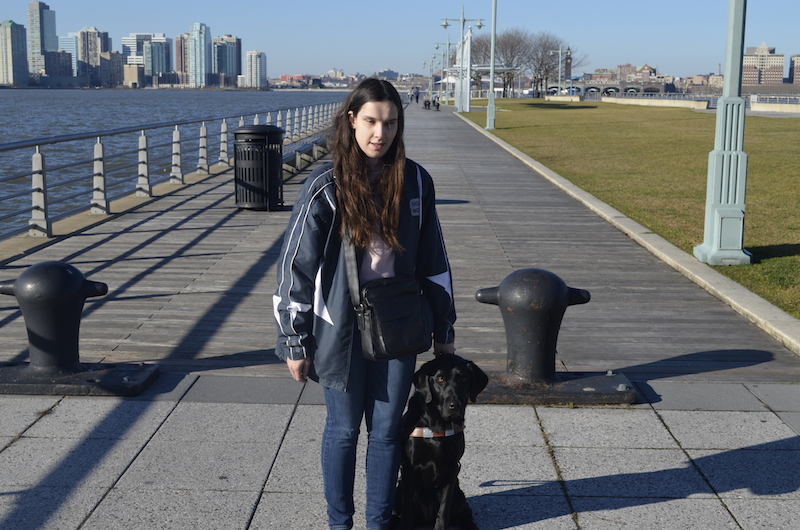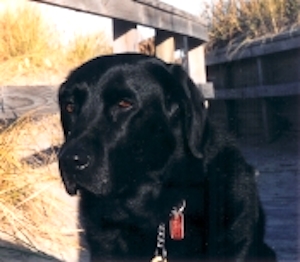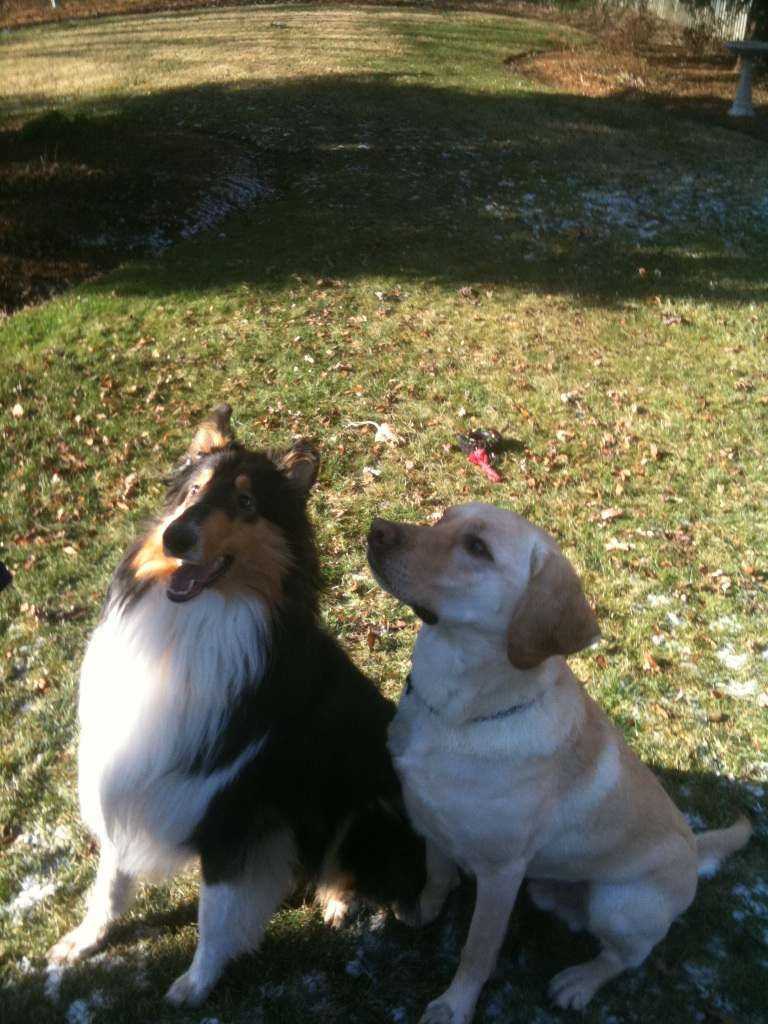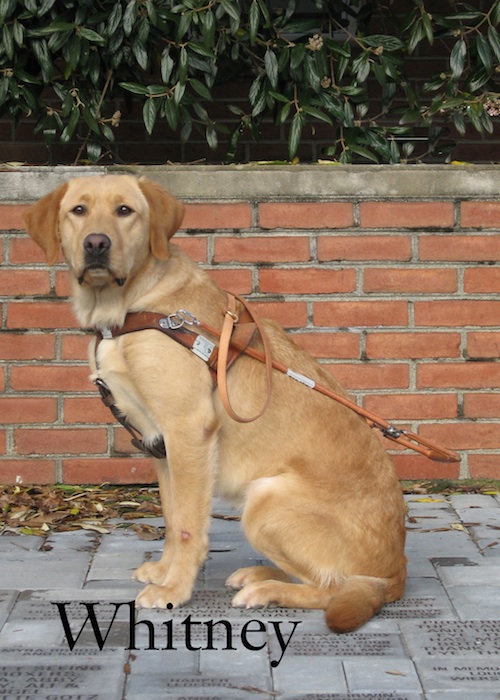Is your husband blind, too?
February 22, 2015 • 7 Comments • Posted in blindness, Blogroll, careers/jobs for people who are blind, guest blog, UncategorizedIf you haven’t signed up to follow BlindBeader’s Life Unscripted blog yet, I highly recommend you do. BlindBeader is a gifted young writer who lives in Edmonton, Alberta with her husband, three cats and guide dog Jenny. She wrote a guest post for our Safe & Sound blog last month with recommendations for visiting New York City, and when I contacted her this week to let her know how much I enjoyed her Life Unscripted post about “inter-marriage” she generously agreed to let me reblog it here for you.
So, Like, he takes care of you!” Or…?
by Blindbeader
Beyond my blindness, which is fairly visibly obvious, one of the first things people notice about me is the ring on my left ring finger. Many of them will say something about me being married, and the topic comes around to the fact that my husband is sighted.
“Oh, that’s great!”
Are they happy that I am married, happily, to someone who loves me? That I share my life with someone who carries me through dark times as I try and do for him? That we own a house, laugh at the antics of my guide dog and our three cats, cook, clean, bicker, smile, laugh, share hobbies, misunderstand each other, argue over money or sex or in-laws, smile and nod at little quirks that we just accept about each other?
Or are they happy that he can see?
Thankfully, Ben has told me that we don’t often get people staring at us, unless he is walking me into tables and chairs (something he has struggled with since we started dating). There are no noticeably pitying looks, or no outward looks of admiration…
But it is not uncommon for me (and others with sighted partners) to hear comments about how great it is that their mate is there to “take care of them.” Sure, he cooks a mean lasagna and picks up groceries, but I do laundry and clean the bathroom; if that’s taking care of me, then my contributions to our household are obviously considered “lesser” than his. Often times (though this is not unique to my husband), staff at stores or restaurants will ask what “she” would like. Few things annoy me (and him) more, so often times I will assert myself, or he will direct whoever to speak to me directly. Ben says he often gets questions about how I can read, what I do for work, or if I have a dog – questions that are par for the course when people meet or hear about a blind person. What is incredibly disconcerting is that it is assumed that Ben is my friend, and my blind guy friends are my FRIENDS (my emphasis). It has never been said in Ben’s presence so far as I know, but I have gone for coffee or worked out with blind male friends, and it is assumed that they are the giver of the ring on my finger.
My friend Meagan is engaged to Gregg, who is also blind. I have known them for quite a while now, and find them cute. Not CUTE (“Oh, the little blindie couple!”) but cute (two people who care about each other and still make each other smile despite distance, time and any difficulties that come their way). She says people do think they are adorable in the blind-couple sense, but are alternately upset that Meagan and Gregg (Meagan in particular) don’t have someone to take care of them. It’s a double-edged sword, contingent on the idea that a blind person needs someone to watch over them; it is not a matter of finding someone to love, who happens to be blind (or sighted, in my case). My friend Alicia agrees, going one step further: “First time someone learns I was dating, especially if the curious person was a parent or family member, that was the first question out of their mouths. I used to get angry and ask them why that was their first question, now I just answer it and move on. Usually their second is, what caused his blindness,” she says.
Conversely, I do know other blind people who are resistent to the idea of dating someone sighted, and seem to carry a resentment for those of us who have. On one hand, it appears that blind people with sighted partners enjoy a certain elevated status; on the other, it is assumed that we think we’re too good to “stick with our own kind.”
Click here to read the rest of BlindBeader’s original “So, Like, he takes care of you!” Or…? post on Life Unscripted. Be sure to read the comments, too. Her well-written and thought-provoking post received dozens of responses from readers who can see and who are blind, some who are deaf, others who are deaf/blind and from some spouses, too. I haven’t come across any other bloggers who’ve tackled this subject matter, and I commend BlindBeader for taking it on.







